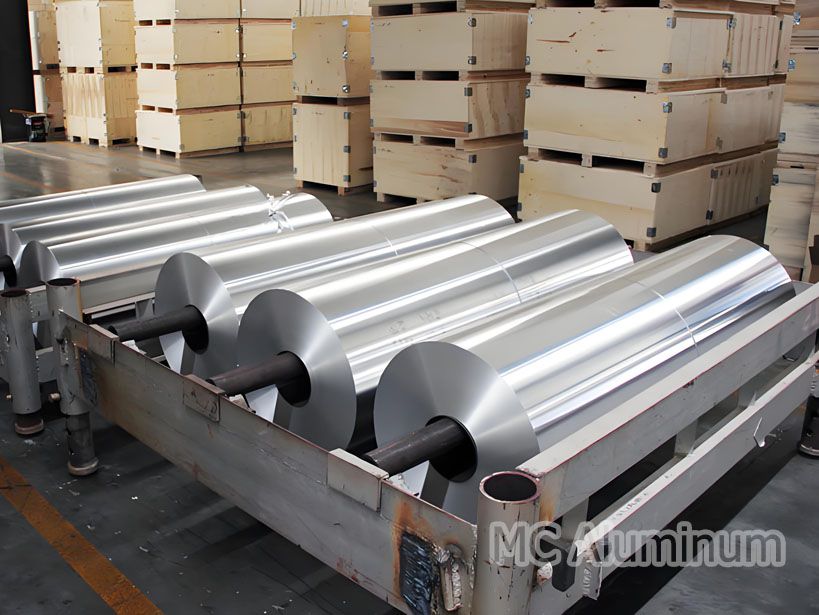Food packaging household aluminum foil is an ultra-thin aluminum material designed for food packaging. It is widely used in households and the food industry due to its superior performance. It is a metal sheet made by repeatedly rolling high-purity aluminum or aluminum alloy to a specified thickness, and its thickness is usually between 6 microns and 20 microns.
The main components of food packaging aluminum foil and household aluminum foil are aluminum, which usually has a content of more than 96.91%, and some aluminum foils even have a purity of more than 99.5%. The remaining components include trace elements such as oxygen, silicon, iron, and copper. Commonly used food-grade aluminum foil alloys mainly include 8011, 3003, and 1235.
Key features of food packaging household aluminum foil:
1. Ultra-thin and light: Aluminum foil is light in weight due to its extremely small thickness, which can greatly reduce the weight of the package while maintaining good mechanical properties.
2. High barrier properties: Aluminum foil has excellent gas, water vapor and light shielding capabilities, which can effectively prevent food oxidation and moisture loss, thereby extending the shelf life of food.
3. Heat and cold resistance: Food aluminum foil can withstand temperatures up to 200°C and freezing environments as low as -40°C, and is suitable for baking, grilling and refrigeration.
4. Food safety: Food-grade aluminum foil is produced under standard processes, is non-toxic and harmless, does not contain harmful heavy metals or other chemical components, and is a packaging material that meets food safety requirements.
5. Easy processing
Aluminum foil is soft and easy to bend, and can be conveniently used to wrap food, make containers or composite with other materials to meet various complex packaging needs.

The standards for household aluminum foil for food packaging mainly include the following aspects to ensure its safety and applicability:
1. Basic standards and material requirements
(1) Aluminum foil thickness: The overall thickness shall not be less than 0.008mm, which is the basis for ensuring that the aluminum foil has sufficient strength and stability during use.
(2) Material composition: Aluminum foil for food packaging is generally made by mixing aluminum with other metals, with high-purity aluminum as the main material and trace elements added to ensure its strength. At the same time, the chemical composition of aluminum foil should comply with the provisions of GB/T3190, and harmful elements such as lead and arsenic should be less than or equal to 0.01%.
2. Surface and mechanical performance requirements
(1) Surface cleanliness: The surface of the aluminum foil should be clean and free of fingerprints. Cracks, bruises, corrosion marks, etc. are not allowed to prevent bacterial growth and food contamination.
(2) Mechanical properties: The room temperature mechanical properties of aluminum foil, such as tensile strength and elongation, should comply with the provisions of relevant standards to ensure that it is not easily damaged during packaging and use.
3. Safety performance requirements
(1) Antibacterial properties: Aluminum foil for food packaging must have good antibacterial properties to ensure that food is not contaminated by bacteria in the packaging.
(2) Restriction of harmful substances: The content of harmful substances such as lead, mercury, cadmium and hexavalent chromium in aluminum foil should be strictly controlled. For example, the Kenyan standard stipulates that the total content of these substances shall not exceed 100 ppm.
(3) Migration test: A comprehensive migration test is required to check the chemical substances that migrate into food under simulated use conditions to ensure that they will not cause contamination to food.
4. Other requirements
(1) Dimensions and allowable deviations: The dimensions of aluminum foil, including thickness, width and length, shall comply with the provisions of relevant standards and allow deviations within a certain range.
(2) Packaging, marking, transportation and storage: The packaging, marking, transportation and storage of aluminum foil should also comply with relevant standards to ensure its quality and safety throughout the circulation process.
